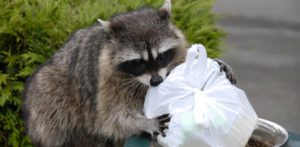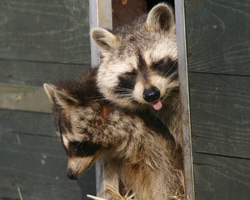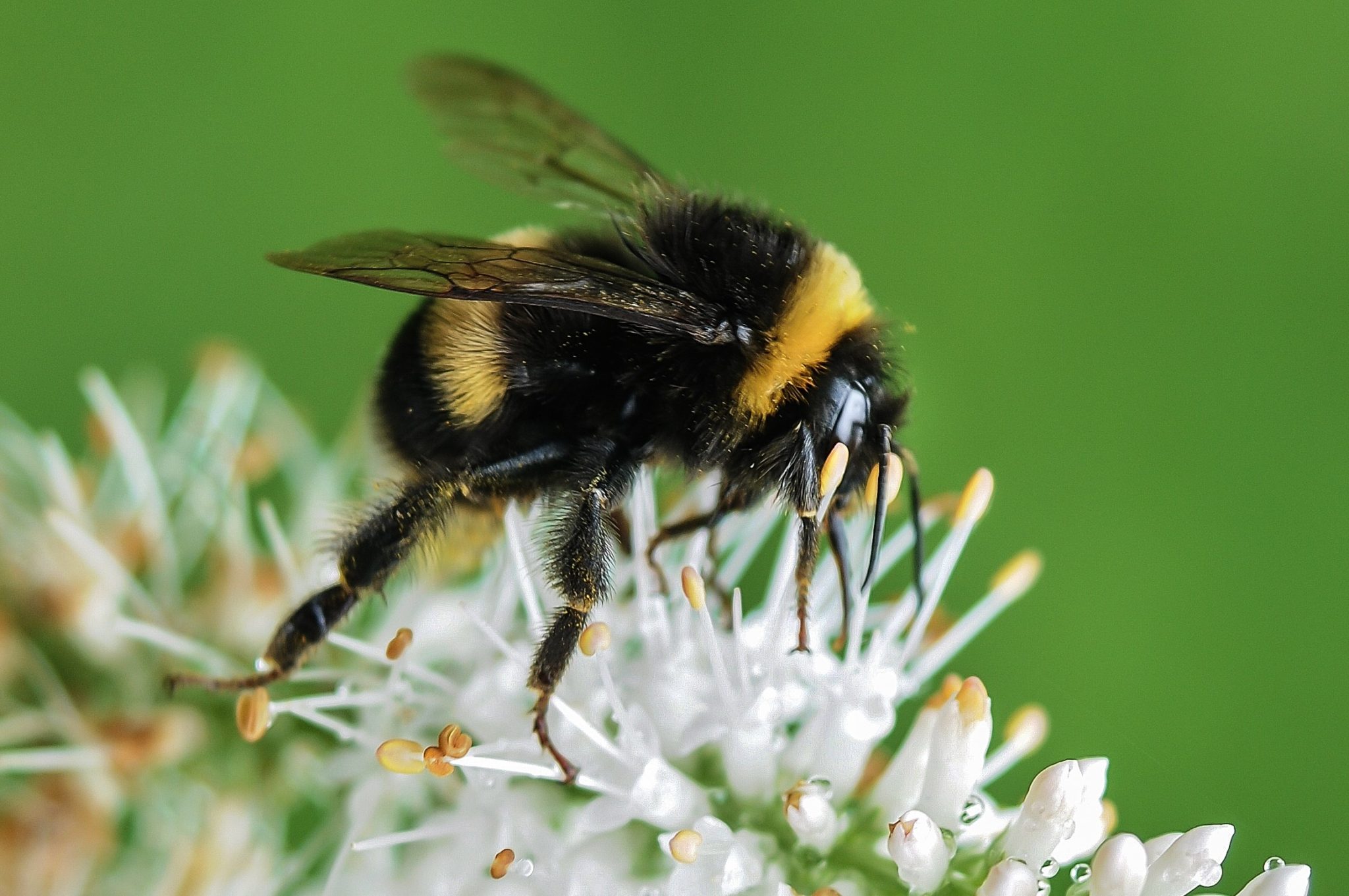By: Sara Miller
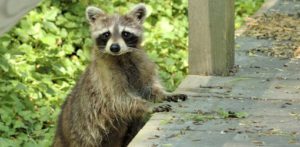
Raccoon climbing onto a porch.
The arrival of spring melts snow, grows flowers, warms the weather, and brings baby animals – including raccoons. You might find adult raccoons and their young cute . . . until they move from their natural home into yours!
Why Woodland Friends Turned Foe
Raccoons are highly adaptable to urban and suburban situations, so your home can easily become a substitute den site. During spring the adult female will be looking for a safe place for her young to be born and grow. Your attic and wall spaces provide enough out-of-the-way nooks and crannies for a mother raccoon to hide her young.
Raccoons aren’t out to ruin your home; they just need a place to stay. And while there are plenty of natural options for raccoon den sites, your home may be an easy alternative. If your house isn’t secure against these furry intruders, it may become just what they were looking for – a place to rear young.
An open garbage can looks like a fee buffet to a raccoon.
Signs of Raccoon Damage
There are some things that you can keep an eye out for when it comes to raccoon damage to your home, clues that let you know that you are in fact dealing with a raccoon and not something else. Knowing the signs will help you make the best decisions for reclaiming your home from animal intruders such as raccoons.
Signs of raccoon damage to your home include:
Raccoons taking up residence.
- Damage will most likely take place in the attic.
- Look for torn soffits under eaves, broken or chewed eave fascia boards, roof shingles torn away near vents, or broken attic vents.
- Droppings may be found in a central location on the roof, known as a raccoon latrine, or inside the attic.
- Inside the attic you may find flattened insulation, flexible ducts that have been ripped apart, and chewed wiring. This means insulation that doesn’t insulate, and damaged wiring that can cause a fire.
Preventing Raccoon Damage
There are several preventative measures that you can initiate in order to discourage raccoons from choosing your home as a den site.
Food is a big reason raccoons set up shop at your house. If there is a constant food supply nearby, then the raccoons won’t want to travel far away from that food source. Sources of food around the neighborhood could come in the form of garbage, bird feed, and pet food. All of these foods are perfect wildlife attractants.
To reduce or eliminate food sources for raccoons:
-
- Keep garbage in secured trashcans with a thick lid and a weight or pressure straps on top. Thin plastic lids can be chewed and broken.
- Install baffles on bird feeder poles to prevent raccoons from climbing up them.
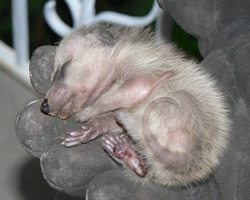
Raccoon kit removed from home.
- Install a tray on bird feeder poles 6’’ or so below the feeder to catch any dropped seed. The tray should be round with a hole in the center for the pole and be large enough to catch the seed, since seed on the ground is just as attractive to raccoons as seed in the feeder.
- Be sure that there aren’t any trees or structures near the bird feeder from which a raccoon could jump to the feeder. If there are, relocate the feeder.
- Take any outdoor pet food in at night. Pet food can attract anything from mice to raccoons to skunks!
- Cut trees back 6’ to 8’ away from your home to prevent access to the roof.
- Metal flashing can be applied to wooden beams and house corners to prevent climbing.
You may also want to check around your home for aging construction and unsecured openings where a raccoon could create an entrance. Be sure that any repairs are sturdy. Raccoons are strong animals with very hand-like, dexterous front paws.


